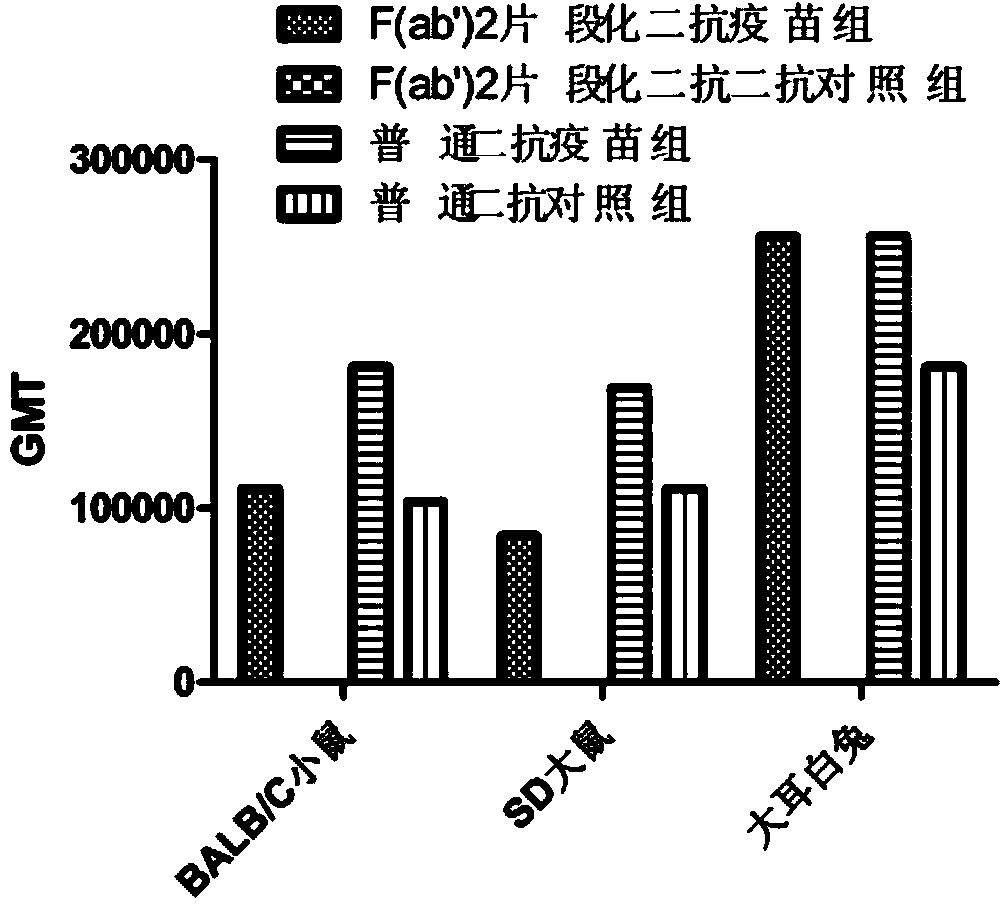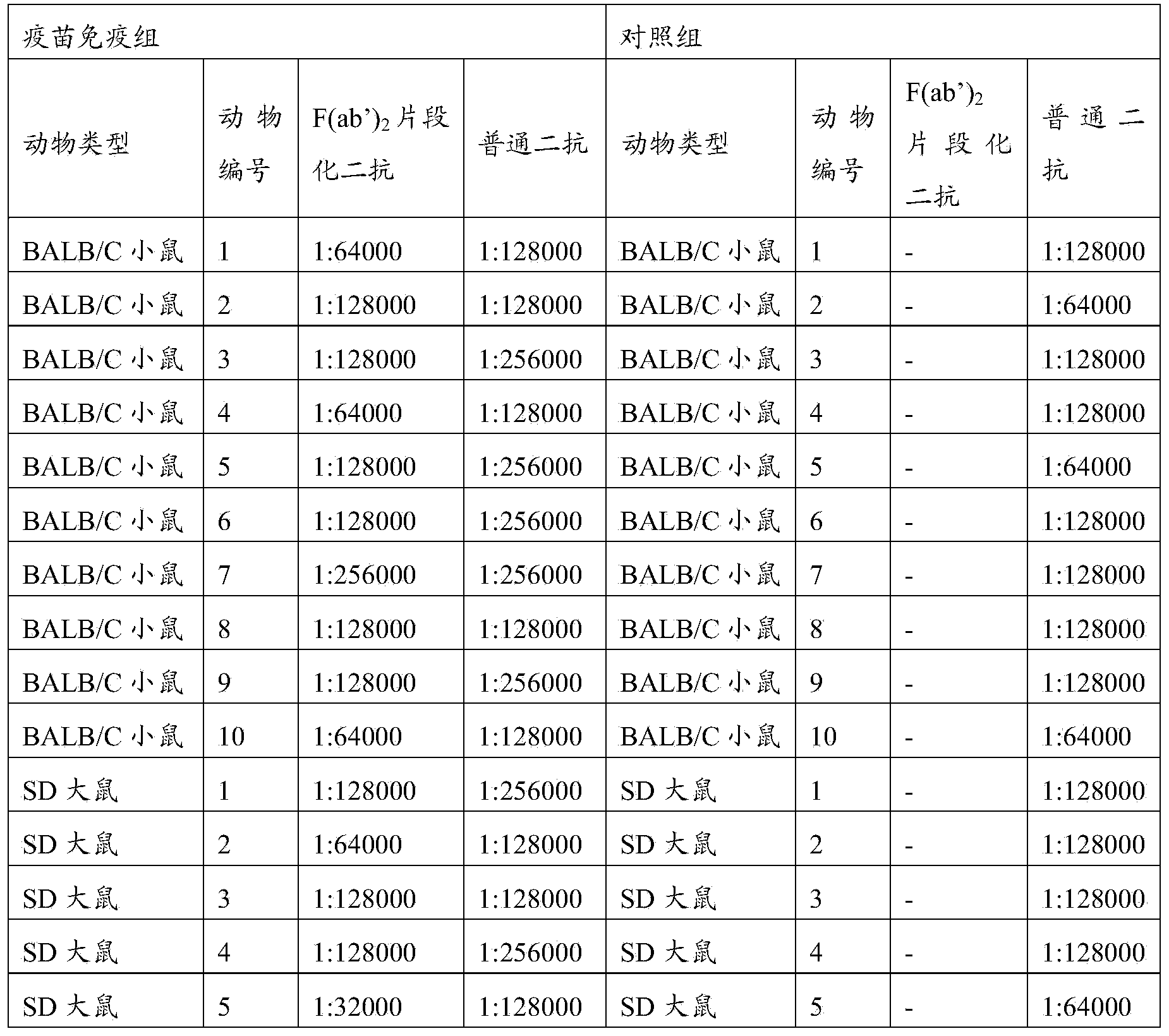Detection method and detection kit of antigen-specific IgG (immunoglobulin G) antibody of staphylococcus aureus SpA5 mutant
A kit and specific technology, applied in the field of antigen-specific IgG antibody detection methods and detection kits, can solve problems such as difficulty in detecting SpA5-specific IgG, and achieve improved specificity, simple operation and good repeatability Effect
- Summary
- Abstract
- Description
- Claims
- Application Information
AI Technical Summary
Problems solved by technology
Method used
Image
Examples
Embodiment 1
[0037] Embodiment 1: Immunization of animals and the acquisition of immune serum
[0038] 1) Grouping of animals: According to the principle of randomization, the animals were divided into vaccine immunization group and control group. The grouping situation is shown in Table 1.
[0039] Table 1: Grouping of experimental animals for immunogenicity studies
[0040]
[0041]2) Immunization of experimental animals: the vaccine group was injected intramuscularly with SpA5 protein, one injection (600 μL) per animal; the control group was immunized with the same volume of normal saline, and the immunization procedure was three times on day 0, day 14 and day 21.
[0042] 3) Blood collection: Blood was collected 14 days after the end of the last immunization. Blood was collected from mice by enucleation of the eyeballs, from rats by tail veins, and by rabbits from ear veins. After the blood was incubated at 4°C for 2 hours, it was centrifuged at 8000rpm for 10min, and the serum was...
Embodiment 2
[0043] Example 2: Pepsin Digestion of Antibodies in Serum
[0044] Take 20 μl of the serum obtained in Example 1, add 180 μl of enzyme digestion solution, mix well, and digest in a water bath at 37°C for 6 hours, shake and mix for 5 minutes every 1 hour.
Embodiment 3
[0045] Embodiment 3: the detection of anti-SpA5 specific antibody
[0046] experimental method:
[0047] 1) Coating: Dilute the purified SpA5 protein to 2 μg / mL with coating solution. Coat the ELISA plate with 100 μL / well, shake well and spread evenly, and place in a refrigerator at 4°C overnight or at 37°C for 2 hours.
[0048] 2) Sealing: wash the plate 4 times with washing solution, add 300 μL of solution each time, shake for 30 s, and absorb the solution for 2.5 s. Block the enzyme strips with 200 μL / well of blocking solution, and place in a refrigerator at 4°C overnight or at 37°C for 2 hours.
[0049] 3) Add the primary antibody: Wash the plate 4 times with washing solution, add 300 μL each time, shake for 30 s, and absorb the solution for 2.5 s. Dilute the enzyme-digested serum by 200 times to 1:2000, then dilute 7 gradients by 2 times with antibody diluent, shake well. The diluted sample was added to the enzyme-linked plate at 100 μL / well, and incubated in a 37°C i...
PUM
 Login to View More
Login to View More Abstract
Description
Claims
Application Information
 Login to View More
Login to View More - R&D
- Intellectual Property
- Life Sciences
- Materials
- Tech Scout
- Unparalleled Data Quality
- Higher Quality Content
- 60% Fewer Hallucinations
Browse by: Latest US Patents, China's latest patents, Technical Efficacy Thesaurus, Application Domain, Technology Topic, Popular Technical Reports.
© 2025 PatSnap. All rights reserved.Legal|Privacy policy|Modern Slavery Act Transparency Statement|Sitemap|About US| Contact US: help@patsnap.com



